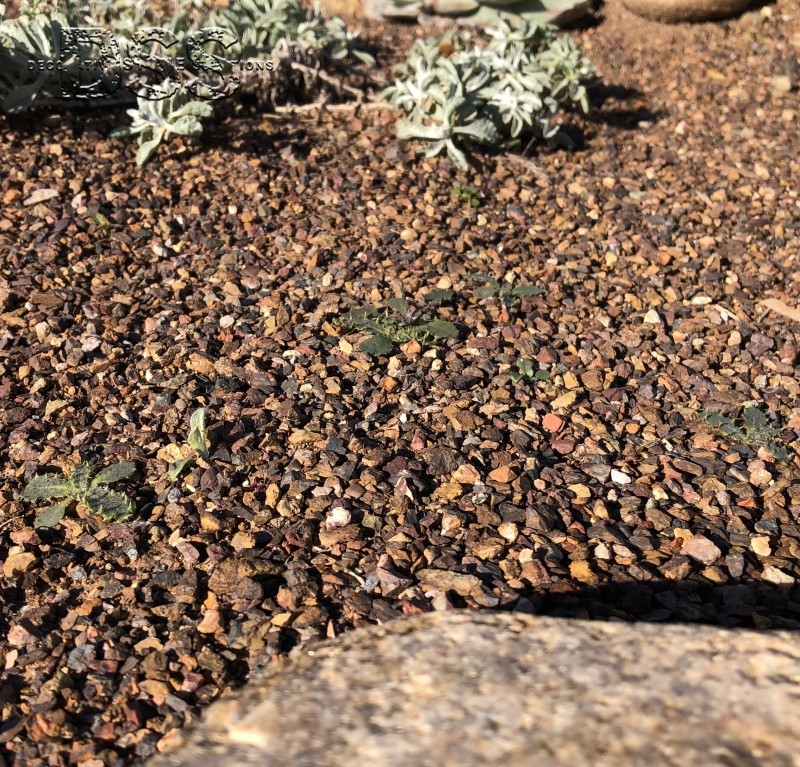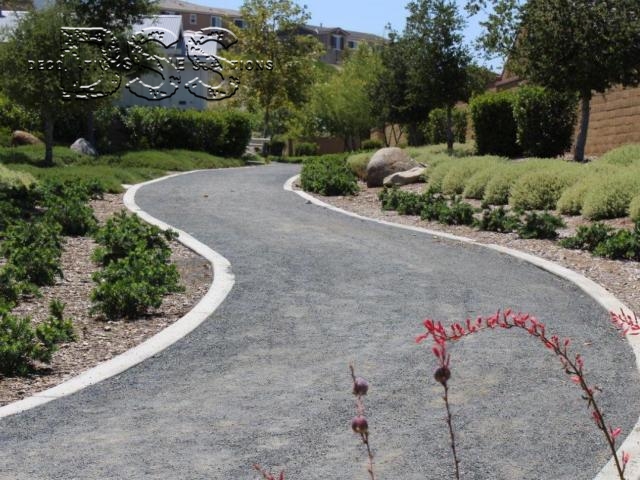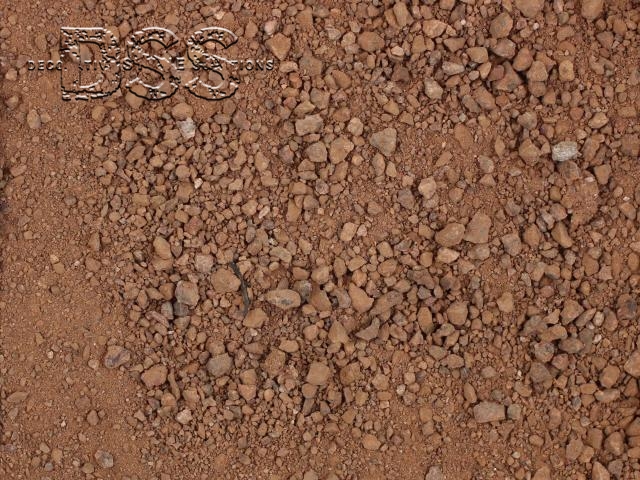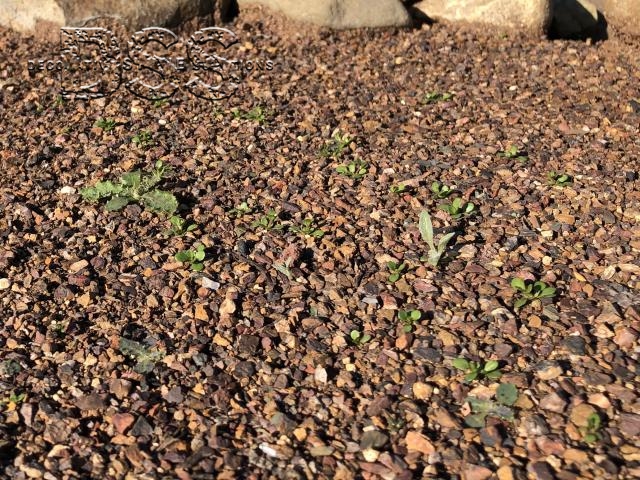Decomposed granite, commonly referred to as D.G., is a small, fine material that is best used for ground cover on walkways, pathways, driveways, and garden trails. Their sizes range from 3/8” inches down to rock dust and this mixture of sizes allows for the correct blend of large particles “strength”, medium sizes “space filler”, and fines “binders”, to come together for a stable surface once wet and compacted. They can be the preferred option for ground cover not only because of their attractive design and style but also because of the low maintenance they provide. Because of this, D.G. is an excellent option to install as a xeriscape ground cover where little-to-no irrigation is needed, especially crucial for dryer, drought-prone areas.


When it comes to style, there are plenty of options that will best suit the landscape design. The color scheme chosen will further enhance the design – with the most commonly used colors being gray, like our Cloud Nine, a reddish hue, like our Sunset Red, or the tan browns, like our own California Gold. However, even the most stylish D.G. installments can be affected by elements like wind, foot traffic, and even blowers that can create messy nuisances from the fine D.G.. A rule of thumb when applying D.G. ground cover is to always install an edging around the border to keep paths contained and free of contamination from other ground coverings. It is key to install a sturdy border capable of withstanding the lateral forces of the compaction process. Anybody that installs D.G. will rest easy knowing that it is a stylish, cost-efficient, and low-maintenance option for ground cover paving.



On top of all the benefits that come with D.G., many think that because there is very little organic matter in D.G. that weeds will not grow in it. However, that is not always the case in the long term. D.G. is porous and able to provide drainage to an extent, which in turn allows the ground below to receive moisture. For example, the recent rains in Southern California have already caused all the wind-blown weed seeds to begin sprouting. This includes seeds that have settled on or in your D.G. ground cover or pathways. While only a small percentage of these weeds will live long enough in your nutrient-poor D.G. soil, some will take root and make it to maturity before beginning the cycle all over again and releasing seeds of their own. This is especially likely to happen if landscape fabric is not placed as a weed blocker between the native soil and D.G..

Weeds sprout up from D.G.
The best time to get rid of these small weeds is when the soil is still damp, which makes them the easiest to pull up. An alternative option is to also apply the herbicide of choice before they become tall and unsightly.
There is no doubt that decomposed granite is a great, natural-looking ground cover option for maintaining a stylish design and eco-friendly xeriscape. However, the natural exterior forces at play like rain, sun, and even air will find ways to stimulate weeds and grass seeds below and cause them to sprout up. When that happens, it is best recommended to take immediate action to maintain all D.G. looking as stylish as possible.

